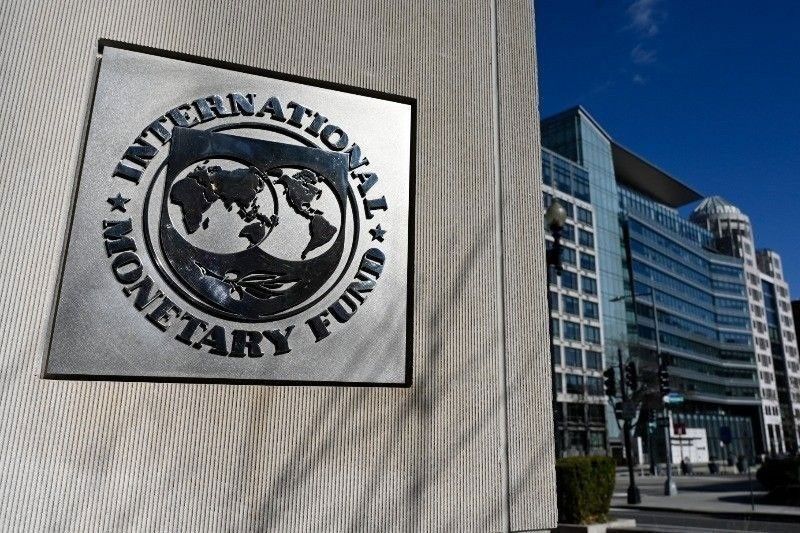IMF urges BSP to keep tight monetary policy

SINGAPORE – The International Monetary Fund (IMF) is urging the Philippines to maintain a restrictive monetary policy stance amid upside risks to inflation.
Shanaka Jay Peiris, division chief of regional studies for Asia Pacific at the IMF, said in a press conference on the latest Regional Economic Outlook (REO) that the current restrictive policy would help bring down inflation to within the two to four percent target by the first quarter of next year.
The Bangko Sentral ng Pilipinas (BSP) aims to bring down inflation back to the target range as early as next month.
“What we mentioned in Article IV a few weeks ago was that there’s upside risk to inflation. I think the BSP recognizes it. What we said is that the current restrictive monetary stance should help bring down inflation by the first quarter of next year. We didn’t think it will come to within target this year,” Peiris said.
Inflation averaged 6.6 percent from January to September, still above the central bank’s target range.
After decelerating for six straight months to 4.7 percent in July from a peak of 8.7 percent in January, the consumer price index (CPI) quickened for two consecutive months to 5.3 percent in August and further to 6.1 percent in September due to soaring oil and food prices.
Peiris said that upside risks to inflation remain as the IMF now sees inflation accelerating to six percent this year from 5.8 percent last year before easing to 3.5 percent next year.
“So what we said is keep the course on monetary policy tightening. And you know, you should bring inflation down, but if upside risks materialize, you may need to raise interest rates more. I think that’s where the central bank is at the moment,” Peiris said.
After emerging as the most aggressive central bank in the region when the Philippines raised interest rates by 425 basis points between May last year and March this year, the BSP maintained a hawkish pause as it left rates untouched for four straight rate-setting meetings in May, June, August and September.
Peiris said the BSP acted decisively in raising rates when inflation went up, while fiscal consolidation is on track supporting monetary policy.
BSP Governor Eli Remolona Jr. has signaled a possible 25-basis-point rate hike during the next rate-setting meeting of the Monetary Board scheduled on Nov. 16.
The BSP chief also hinted of a possible off-cycle rate hike and that the increase may not be the last.
The elevated inflation, tighter or restrictive monetary policy and government underspending dragged the gross domestic product (GDP) growth of the Philippines to 4.3 percent in the second quarter from 6.4 percent in the first quarter of the year.
This prompted the IMF to slash its GDP growth forecast for the Philippines to 5.3 percent from the original target of 6.2 percent for this year, but raised next year’s projection to six percent from 5.9 percent.
The IMF’s latest growth forecasts are below the six to seven percent for 2023 and 6.5 to eight percent targets penned by government economic managers through the Cabinet-level Development Budget Coordination Committee.
The Philippine economy emerged from the pandemic-induced recession with a GDP growth of 5.7 percent in 2021. Economic growth accelerated further to 7.6 percent in 2022 as strict quarantine and lockdown protocols were fully lifted.
“So it’s true that the Philippines was growing at six (percent) plus, and now this year we are expecting a slowdown to 5.3 percent, but go back to six percent next year,” Peiris said.
The former IMF resident representative to the Philippines explained that the projected slower economic growth this year was due to weaker external environment, underspending by the national government and tighter monetary policy conditions.
For 2024, Peiris said the IMF projects a pick-up in economic growth in the Philippines as service exports and shipment of electronic products are expected to bounce back further.
According to Peiris, government spending is likely to accelerate as the Marcos administration aims to raise its infrastructure spending to five percent of GDP via public-private partnership (PPP) projects.
“FDI has picked up. Right now globally it appears weak but opening up to FDI direct investment, the prudent macro policies and also the fiscal focusing on infrastructure, five percent of GDP in public investment PPP, is one reason I think Philippines has done well,” Peiris added.
The lender sees foreign direct investments (FDI) inflow rising as the government continues to open up more sectors of the economy to foreign investors.
Latest data from the BSP showed that FDI inflow declined by 14.7 percent to $4.66 billion from January to July compared to $5.47 billion in the same period last year on concerns over slowing global growth.
In 2022, the Philippines managed to exceed its FDI inflow target of $8.5 billion despite the 23 percent plunge in net inflow to $9.4 billion from an all-time high of $11.98 billion in 2021.
The BSP further lowered its FDI projections to $8 billion from the original target of $9 billion for this year and to $10.5 billion from the previous forecast of $11 billion for next year.
IMF Asia and Pacific Department director Krishna Srinivasan said in his opening remarks that the lender now sees growth slowing to three percent in 2023 and 2.9 percent in 2024 from 3.5 percent in 2022.
“The global outlook is supported by continued consumption dynamism in the US, but faces pressures from China’s worsening property crisis, tight policy stances around the world, the consequences of Russia’s war in Ukraine, and growing geoeconomic fragmentation,” Srinivasan said.
Despite a challenging global environment, Srinivasan said the Asia-Pacific region remains a relatively bright spot with a growth or 4.6 percent in 2023 and 4.2 percent in 2024, equivalent to about two-thirds of global growth.
Turning to inflation, Srinivasan said headline inflation has declined from post-pandemic peaks as global commodity prices have receded and monetary policy bites, albeit with signs of renewed prices pressures emerging more recently.
However, he said core inflation remains sticky due to tight labor market and positive output gaps.
He said central banks should stay the course with policies to ensure that inflation is durably at appropriate targets and expectations are anchored.
“With still accommodative financial conditions in Asia’s emerging markets and the upside risks mentioned above, there is no urgent need to ease monetary policy. Higher oil prices could lead to higher inflation expectations and second round effects even in Asia’s advanced economies with tight labor markets, requiring higher for longer rates,” Srinivasan said.
- Latest
- Trending
























